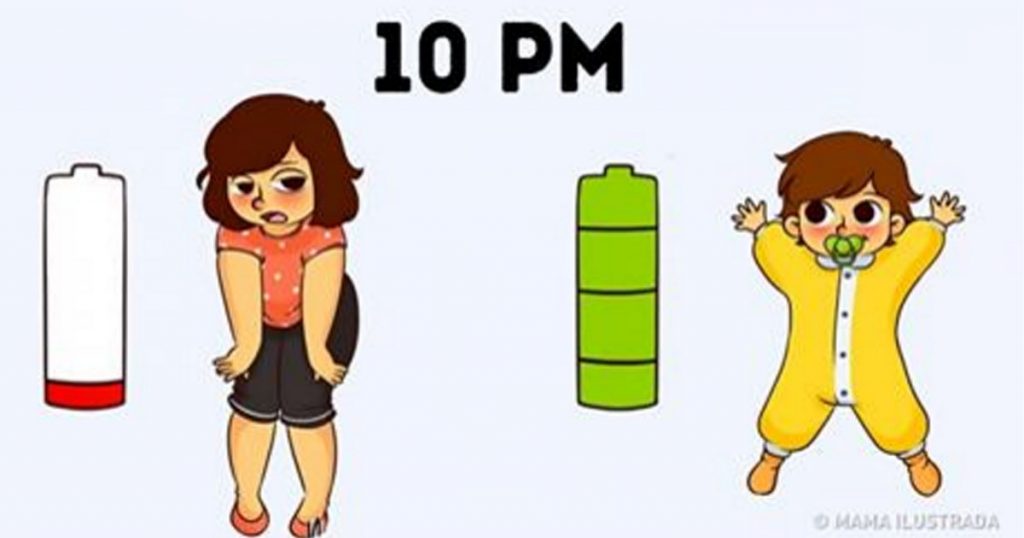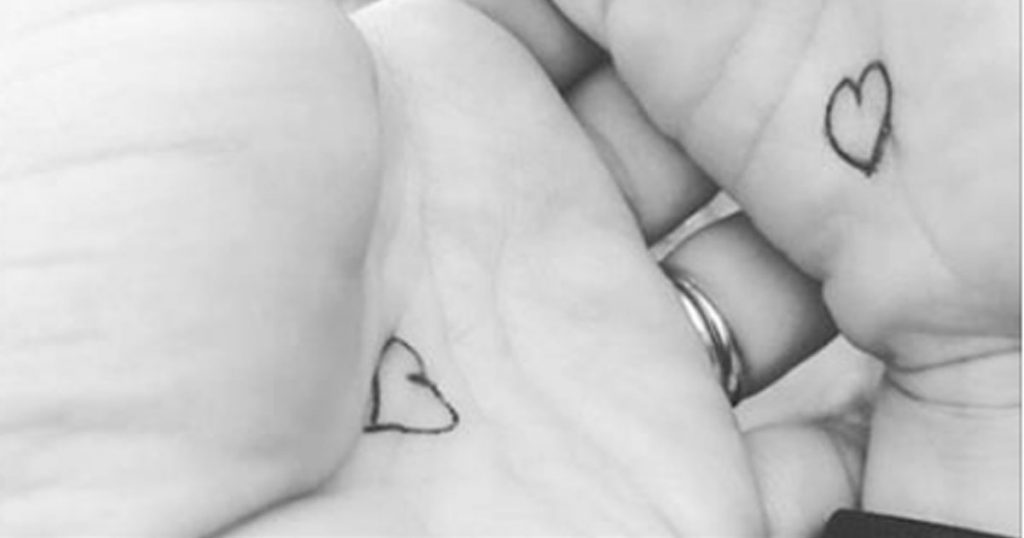We’ve all learned in science class about how tiny we are in comparison to the vast, infinite universe. And once you consider just how big the universe is, the fact that you can’t find your phone charger suddenly becomes a lot less important, doesn’t it?
Still, it’s hard to conceptualize the size of this lovely blue planet of ours—and how achingly small it is in the grand scheme of things. After all, the world seems like such a ginormous place! Surely we must take up some kind of space in the known universe, right?
Maybe these 30 pictures will help you truly understand the scale. It’s safe to say you’ll never look at the night sky the same way again…
1. This is our home—the one and only planet Earth. But have you ever stopped for a second to consider the fact that literally every single human being who has ever lived, has lived here? Whoa.
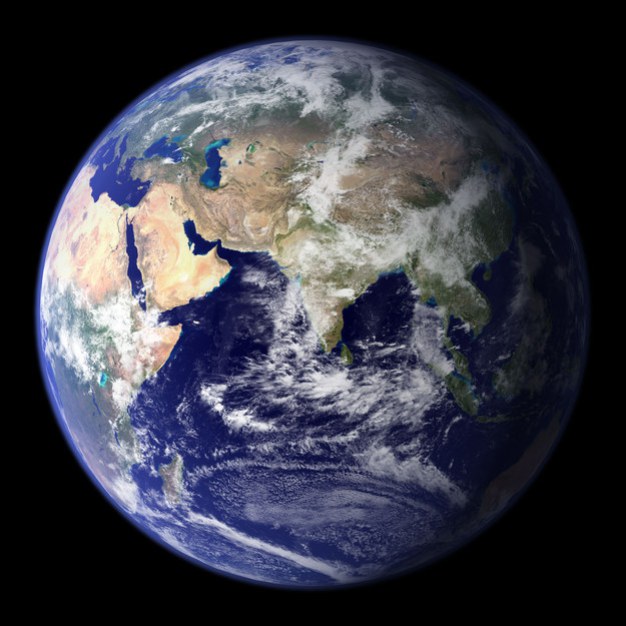
2. Our solar system can also be called “our local neighborhood.” While that sounds kind of crazy—the space between us and, say, Neptune, is almost unfathomable—our solar system is still only an infinitesimally small fraction of the actual, entire universe.
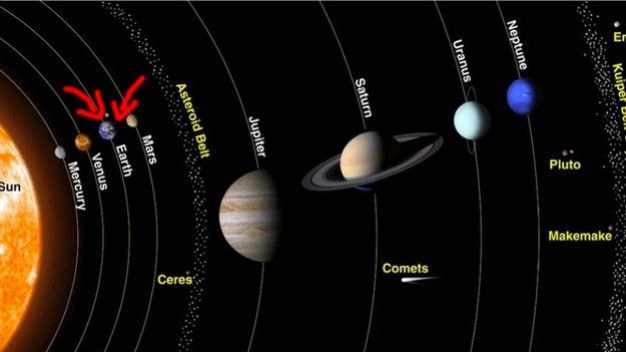
3. This is the distance between the Earth and the moon—to scale. That’s only 238,555 miles! They don’t really look that far apart, huh? Imagine how big the moon would seem in our night sky if it was even just a little bit closer to us!
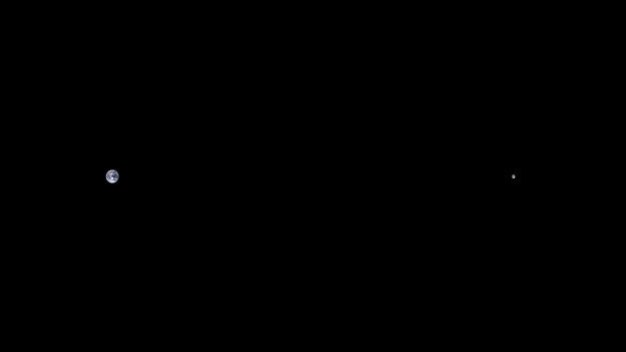
4. Still, the Earth and the moon are quite a distance from each other. Did you know that you can actually squeeze every other planet within our solar system into that space? That really gives you perspective as to how far astronauts had to travel to be able to land on the moon. It’s crazy to think about!
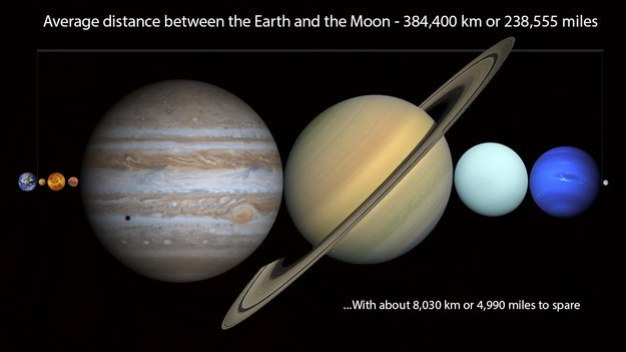
5. It’s also worth noting that some of the planets in our solar system are truly enormous. This teeny green speck is what the continent of North America would look like if it was on the surface of Jupiter. It really puts things into perspective, doesn’t it?
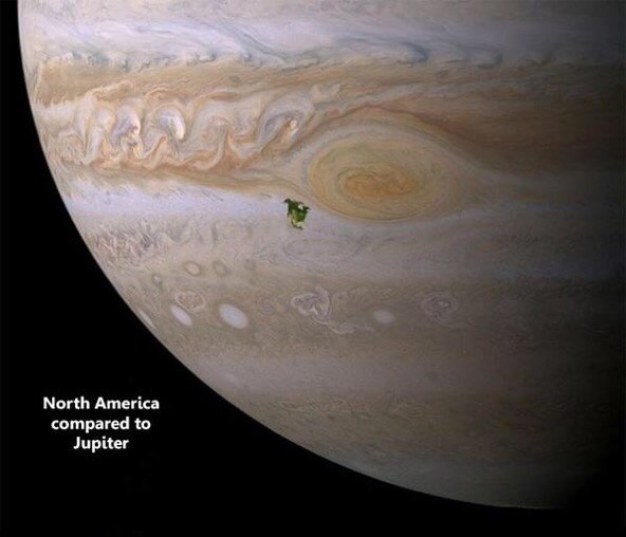
6. Earth itself doesn’t seem all that big when it’s compared to Saturn, either. All of those rings really make us here on Earth look pretty puny. Imagine how long it would take to travel in a plane all around Saturn?
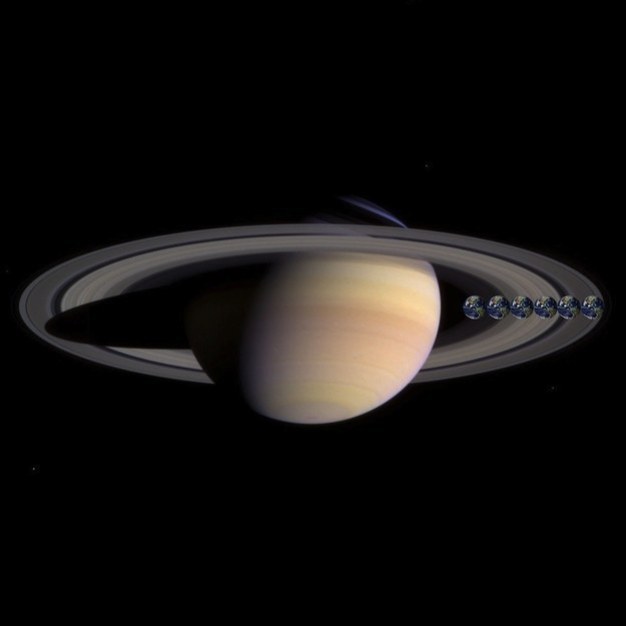
7. This is what we’d see if Earth had rings like Saturn. Isn’t that just so insanely cool looking? There need to be more science-fiction movies that take place on planets with rings like this!
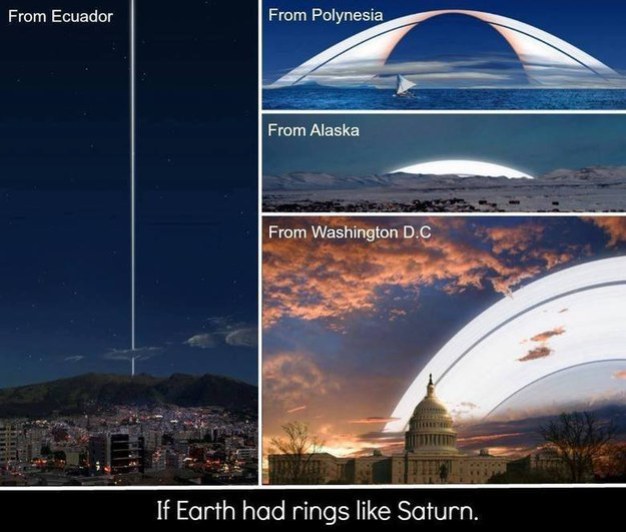
8. This is what the city of Los Angeles looks like compared to an average-sized comet. It’s a good thing those bad boys are made of ice and don’t come close to Earth very often. Otherwise, they could be pretty scary!
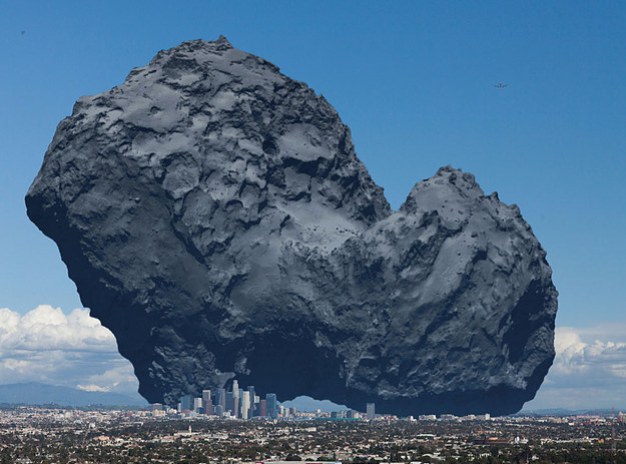
9. None of that compares to how small the Earth is in relation to the sun. This is the truest example of “everything in perspective” inside our solar system—er, neighborhood. Look how tiny we are!
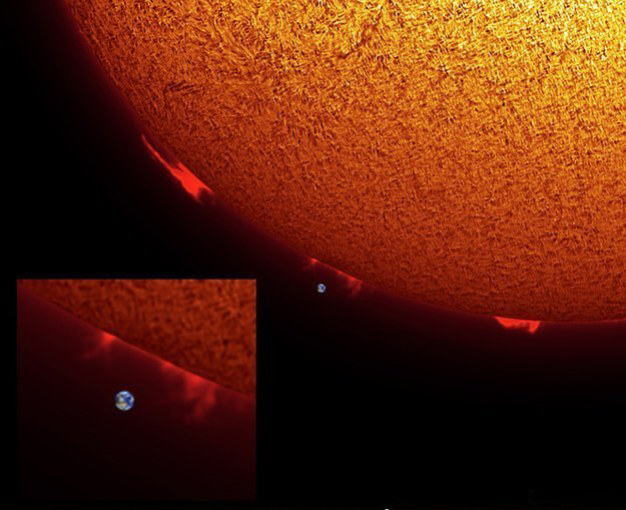
10. Here’s another comparison, just in case we’re not being clear. Earth really is nothing more than a blip on the universe’s radar. The sun just dwarfs us so thoroughly, it’s hard to even comprehend.
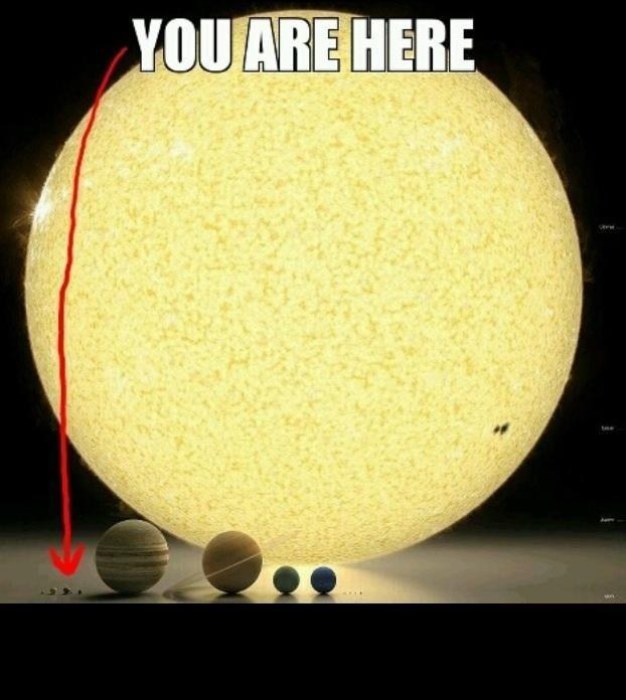
Learn even more about our universe on the
11. If you were able to stand on the moon, this is what Earth would look like. You see the moonrise (almost) every night in the sky, but the “Earthrise” is something only a very select few have ever witnessed.
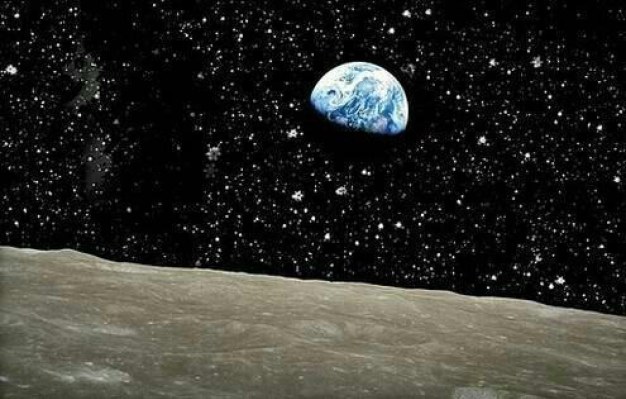
12. And this is what our little blue planet would look like from Mars. If you were to wake up on Mars, you’d need some really strong binoculars in order to spot Earth! It’s barely a speck in the distance.
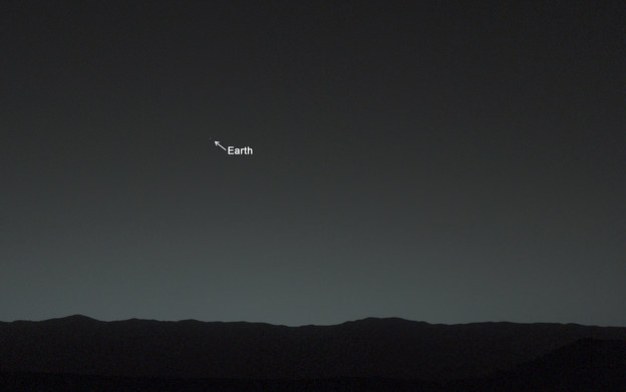
13. This is what Earth would look like if you were situated behind Saturn’s rings. Now, that is really far away! To think we’re nothing but a twinkle in the distance for anyone who might be living on Saturn (aka no one).
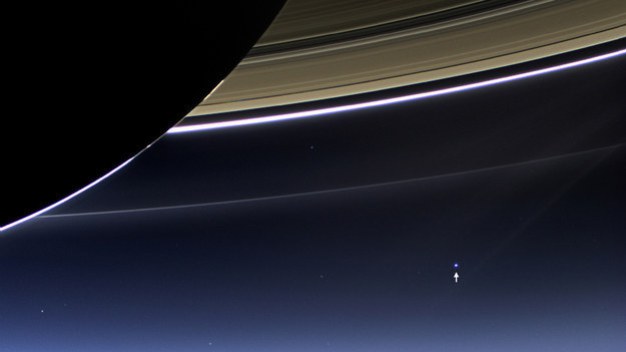
14. Astronomer Carl Sagan once said that “everyone and everything you have ever known exists on that little speck.” The speck here is what Earth would look like from beyond Neptune, which is four billion miles away.
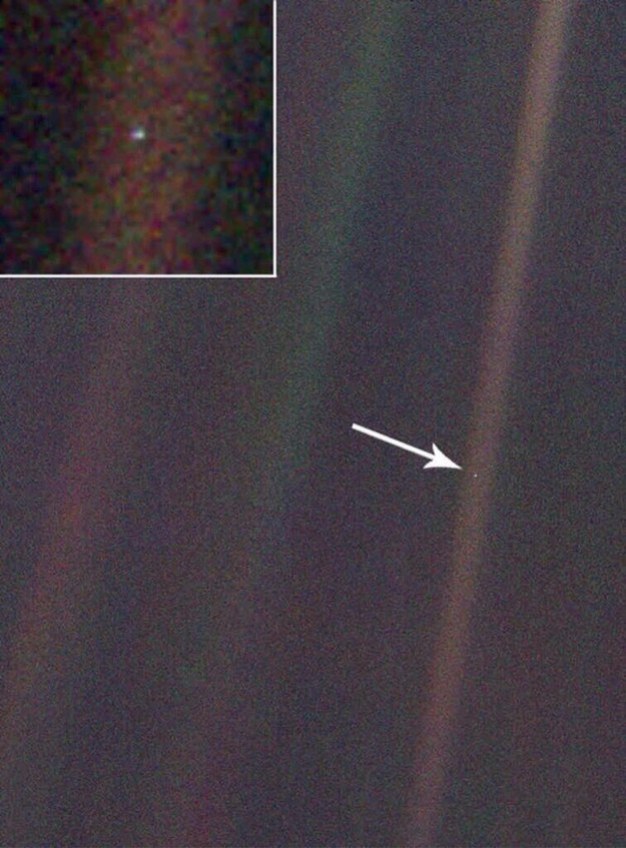
15. Sagan also famously said that there are more stars in space than there are grains of sand on every beach on Earth. That is almost incomprehensible, right? We truly cannot fathom it, no matter how hard we try.
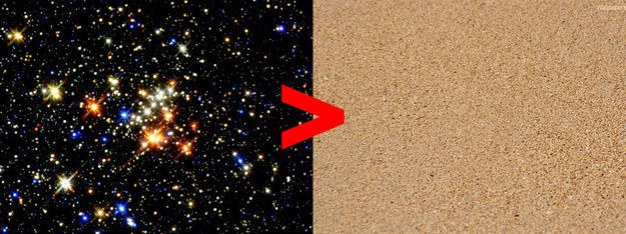
16. And if you thought the sun was big, there exist other stars that are far bigger than our own sun, which is quite small in comparison. Now, we’re really beginning to prove just how small our planet is…
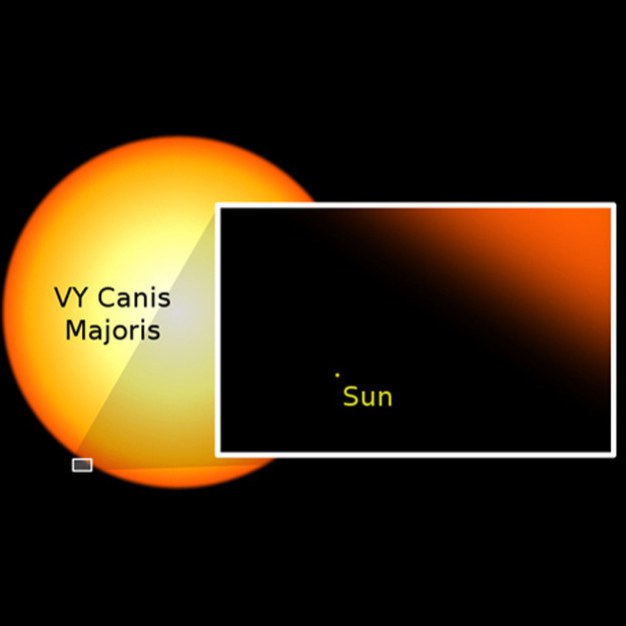
17. VY Canis Majoris, the largest known star in the universe, is one billion times bigger than our sun! That is one billion—with a “b!” It’s just unreal to think about how our local neighborhood is actually quite tiny.
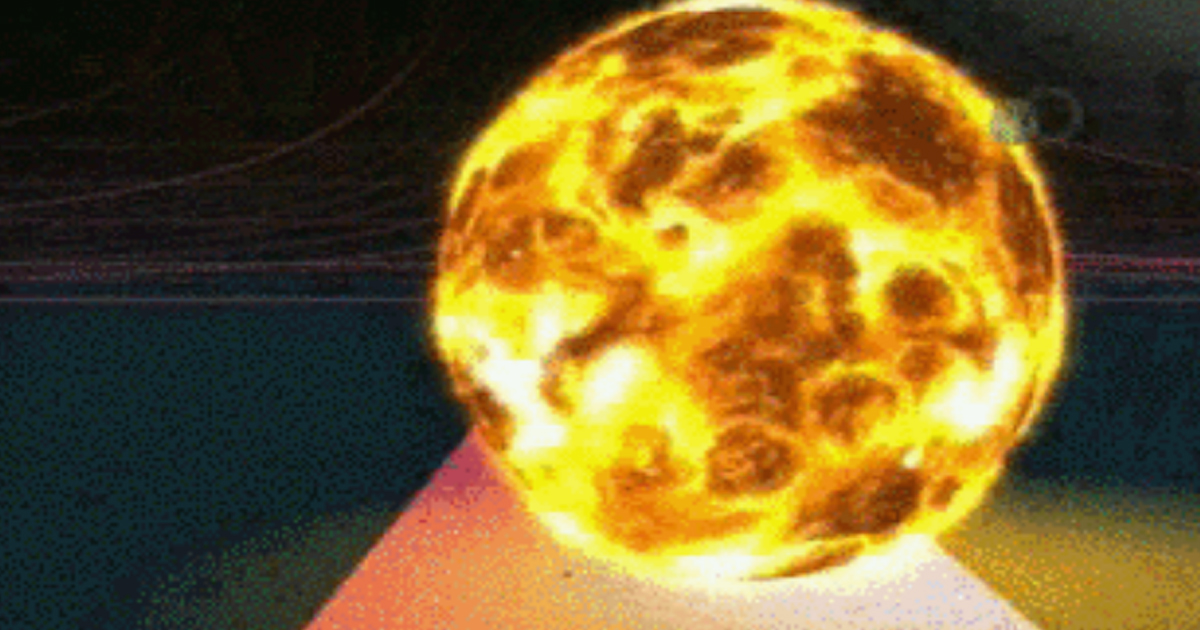
18. If you decreased the size of our sun to the size of a white blood cell, and then reduced the size of the Milky Way galaxy using the same scale, the Milky Way would become the size of the United States.
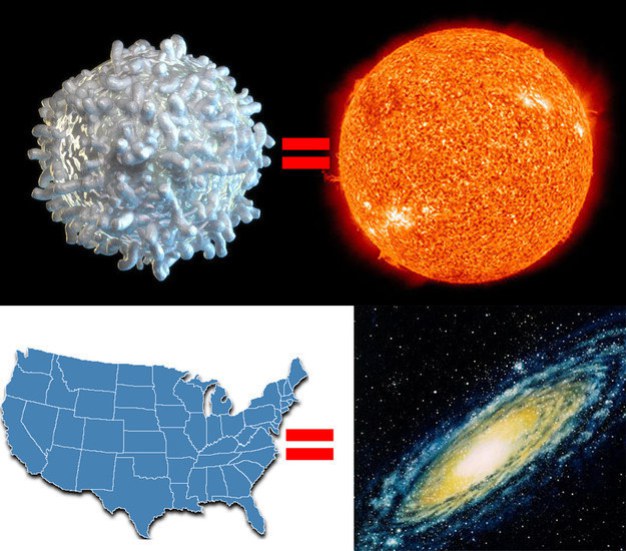
19. This is what the Milky Way looks like in comparison to IC 1011, which is 350 million light years away from the Earth. Our galaxy in general is also quite small in comparison to the others in the universe.
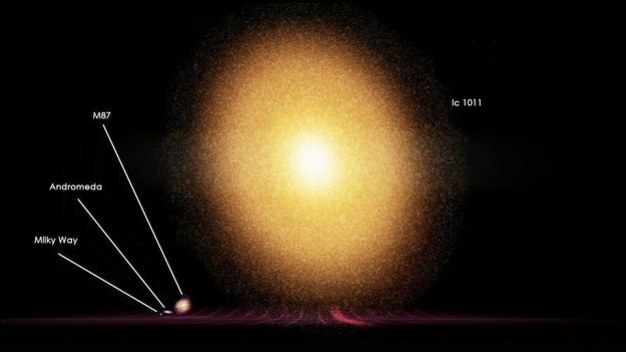
20. There exist thousands of galaxies, and every one potentially contains millions of stars, each with their own planets. This insanely detailed photograph taken from the Hubble Space Telescope demonstrates that. (Each of those bright, swirly dots is an entire galaxy.)

21. This is UDF 423, which is 10 billion light years away. If you were to view this image through a telescope right now, here on Earth, you’d be looking at the spiral galaxy—one of the brightest—as it appeared from when the universe was just 5.9 billion years old.
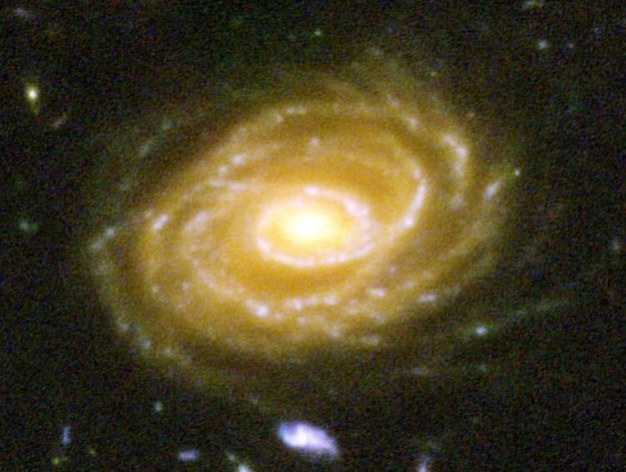
22. Everything that we have seen in space only represents a small fraction of the universe. So, despite the vastness of the observable universe already seeming infinite, that’s still only a small piece.
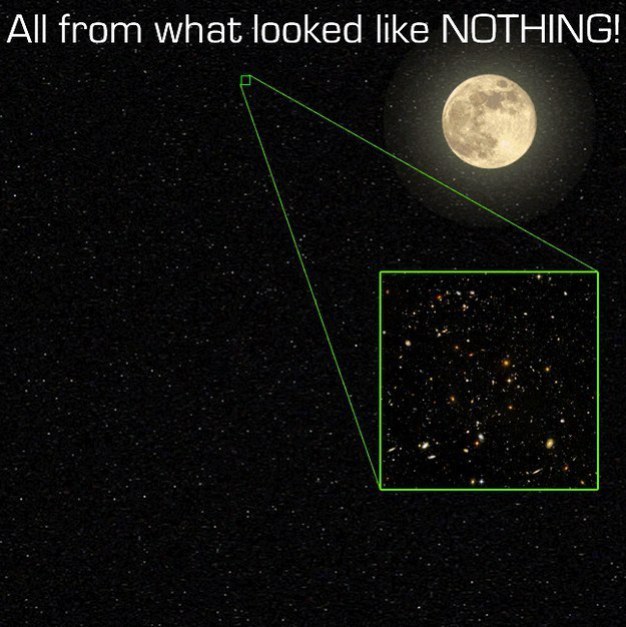
23. Alright, get ready, because now we’re going to start with the Earth, and then zoom out. Are you prepared? You’d better strap yourself in, because this is every bit as mind-blowing as you might expect it to be…
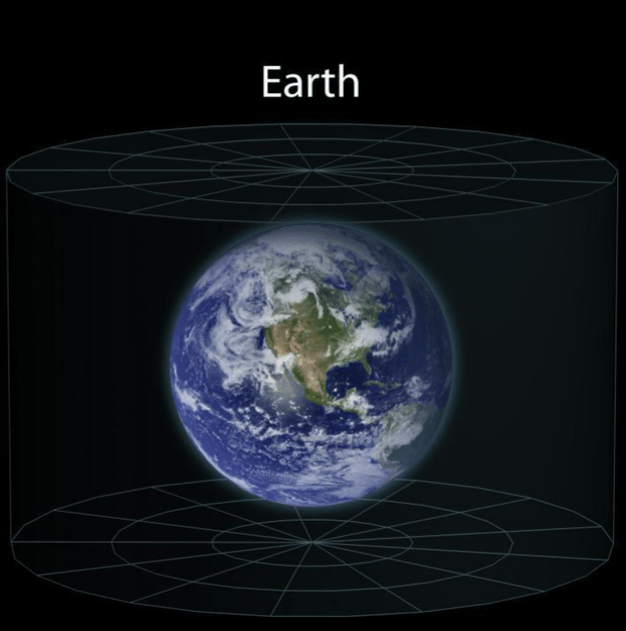
24. Now let’s zoom outward from Earth until we the entire solar system is in our sights. It might seem like a lot, but trust us—it’s actually just a tiny piece of the entire puzzle. It only gets crazier…
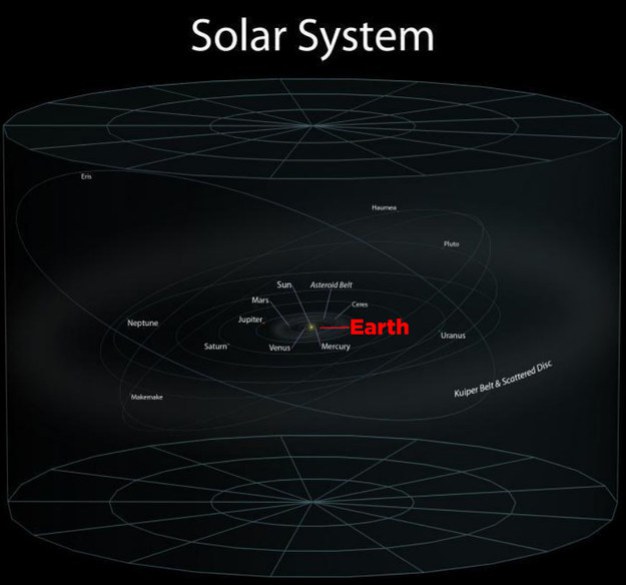
25. If we move a little further out, we can get a glimpse of the most immediate “neighborhood.” Again, it feels like this is an unimaginable amount of space and size, but there is so much more to come…
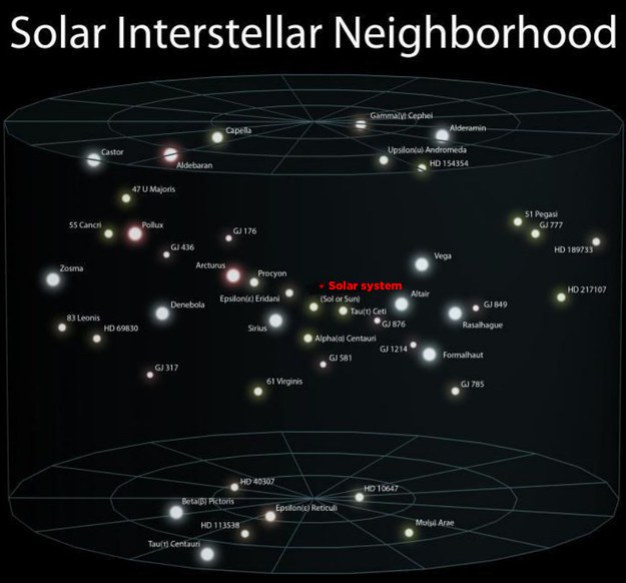
26. The Milky Way—our home galaxy—is the next stop on our trip outward into the cosmos. Where we’d once been comfortable inside our interstellar neighborhood, we’re now way out of our depth…
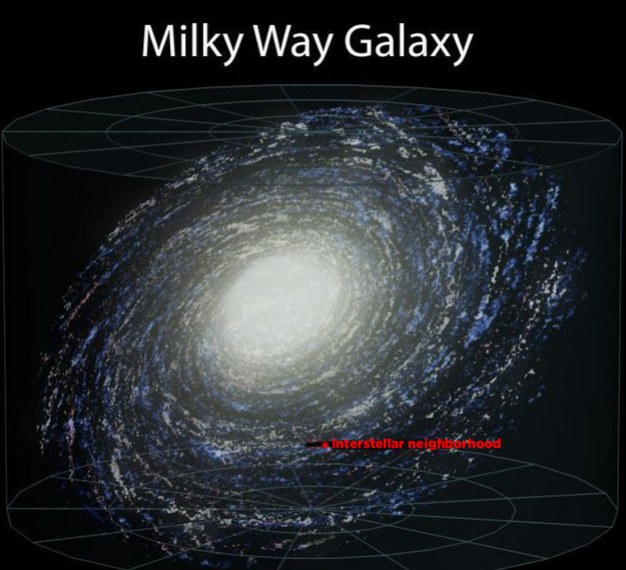
27. Next comes our local galactic group, which is a rather fun name for the cluster of galaxies that are closest to the Milky Way. Each one is home to any number of solar systems just like our own.
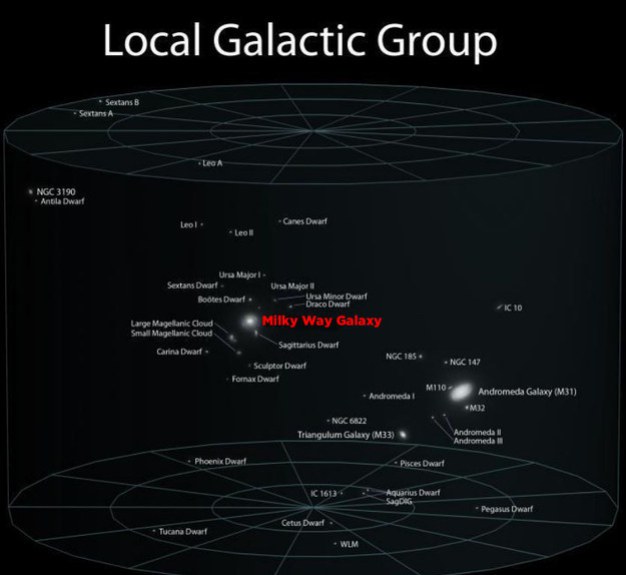
28. From there, we head to our first supercluster: the Virgo Supercluster. This is what we call a cluster of galaxies, which are themselves clusters of stars and planets. The universe is full of ones just like this one!
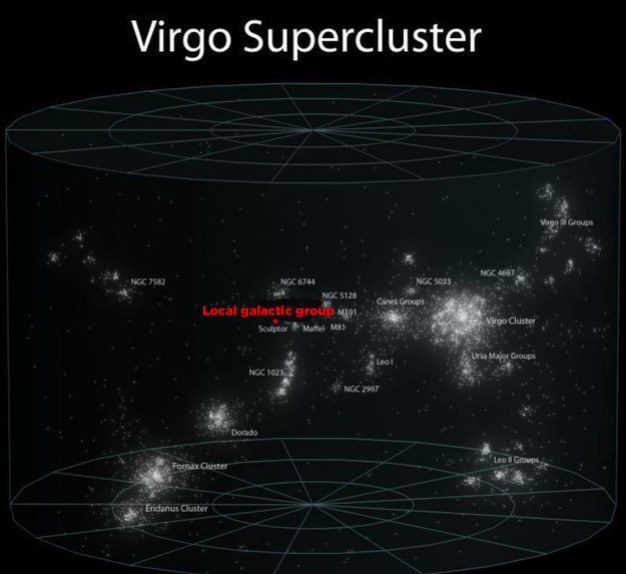
29. Beyond Virgo, it’s even more expansive! You can’t even see the Milky Way from way out here, and the cozy confines of our tiny blue planet are all but forgotten entirely. See ya, Earth!
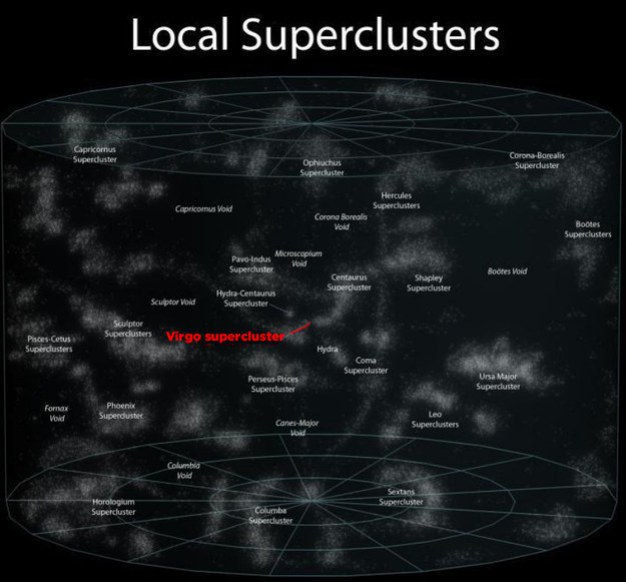
30. And that’s it—almost! The entire observable universe as we know it is the final destination on this outward voyage into space. Though this marks the end of our trip—for now—the observable universe is only a small piece of the whole puzzle. There is so much left to explore!
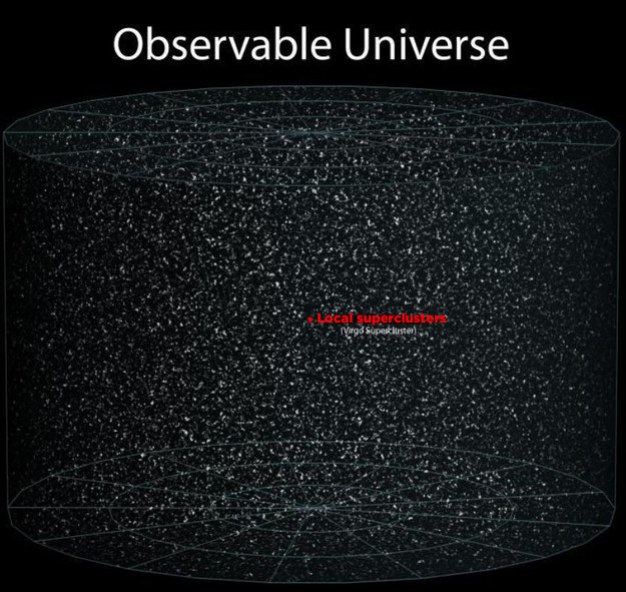
Talk about humbling, huh? We knew the universe was big, but that big? It truly puts things into perspective.
Share these amazing pictures with your friends below!

